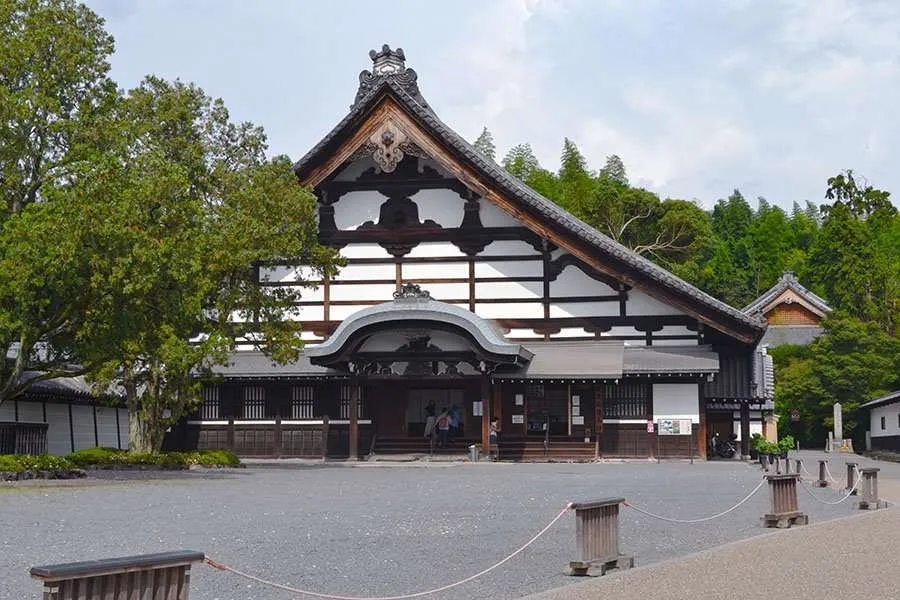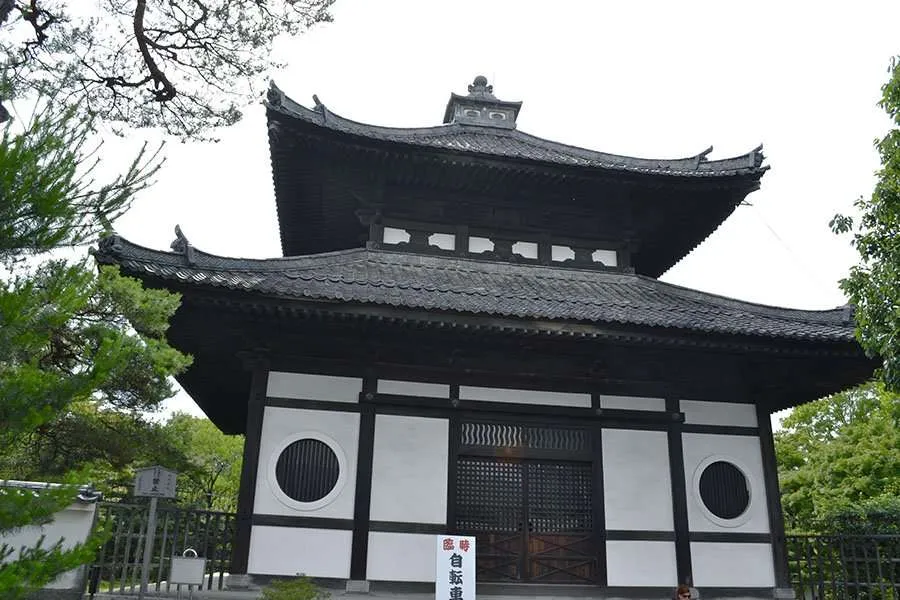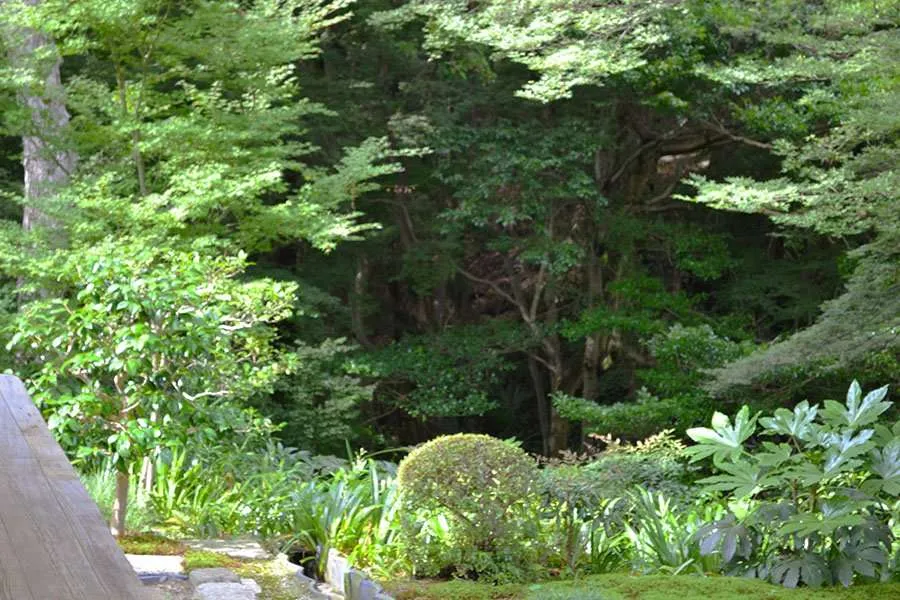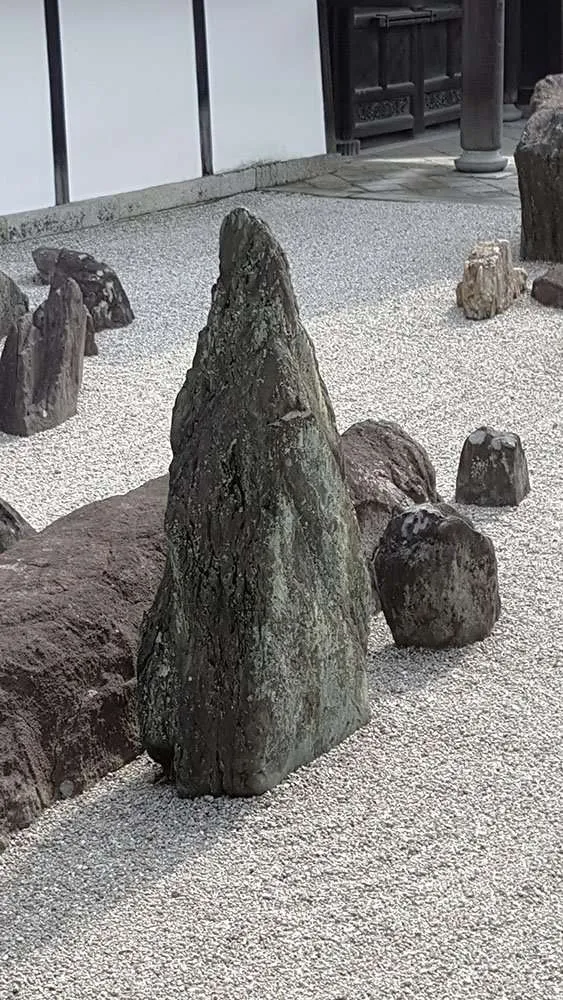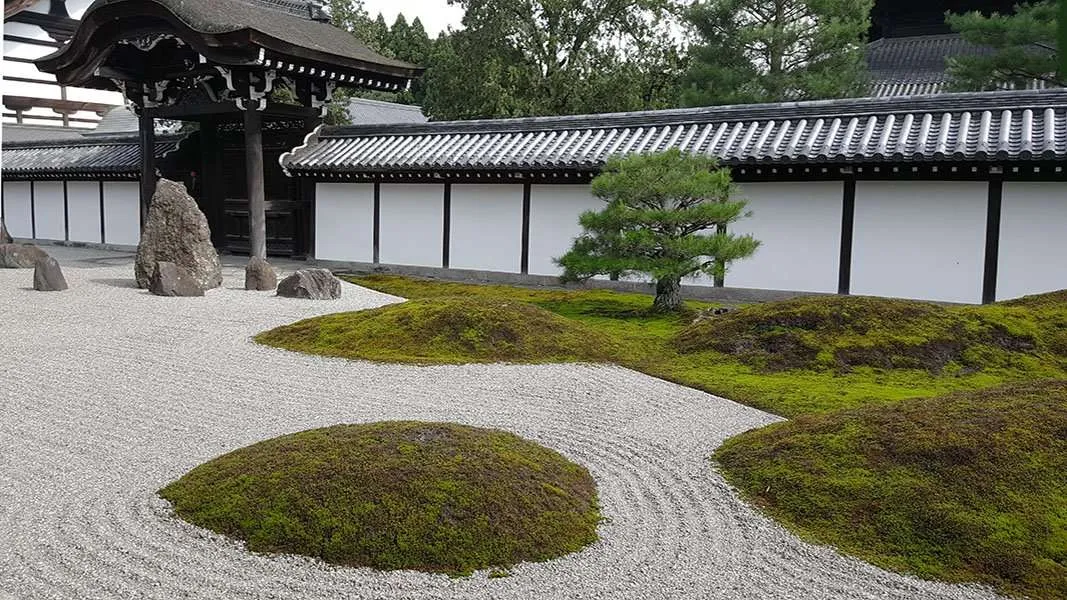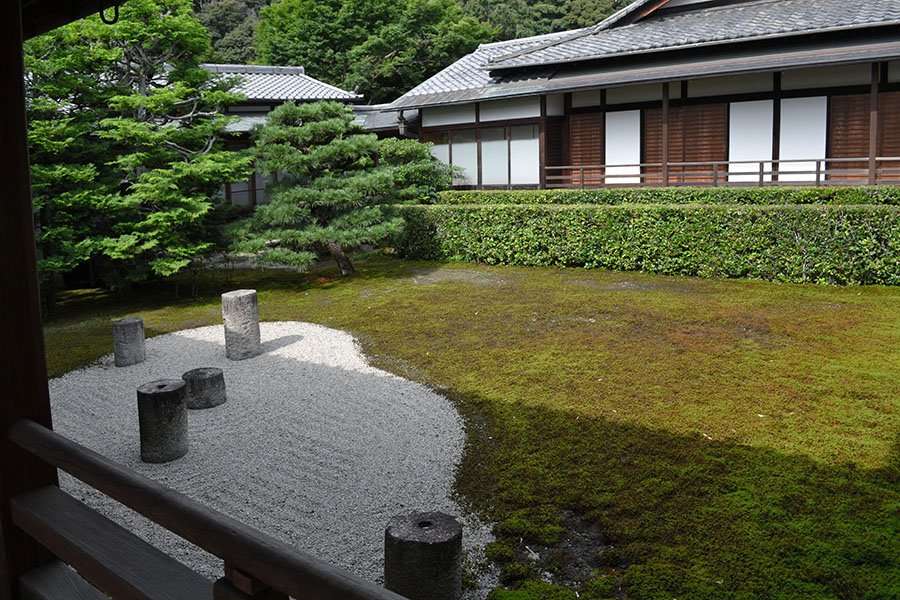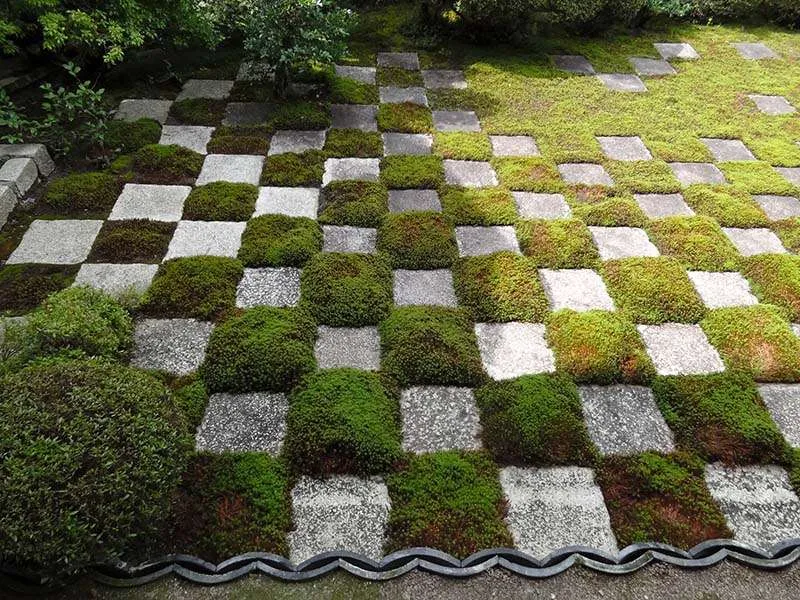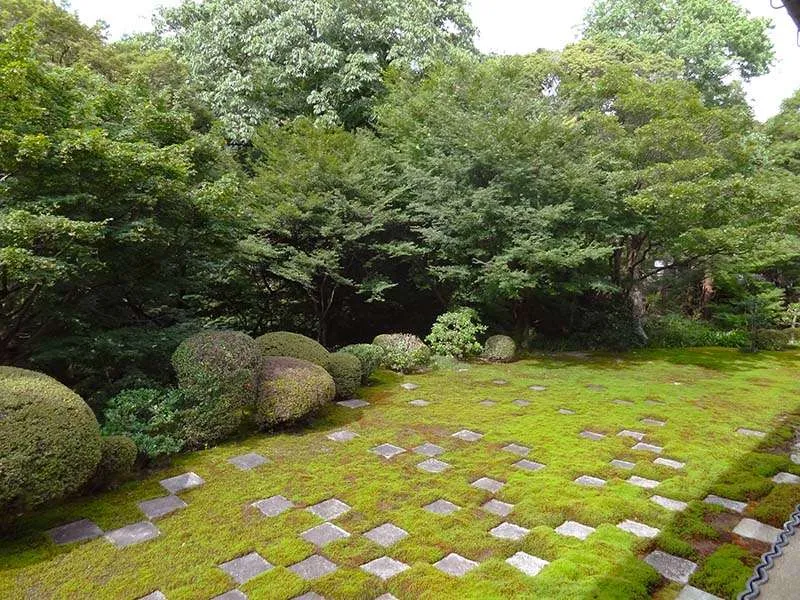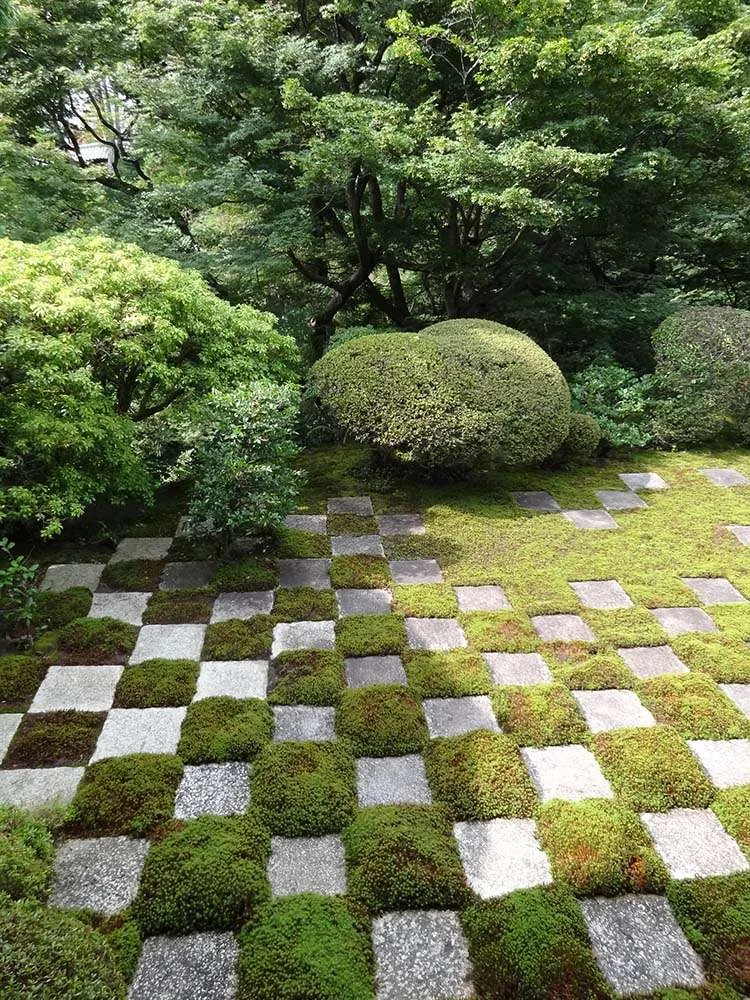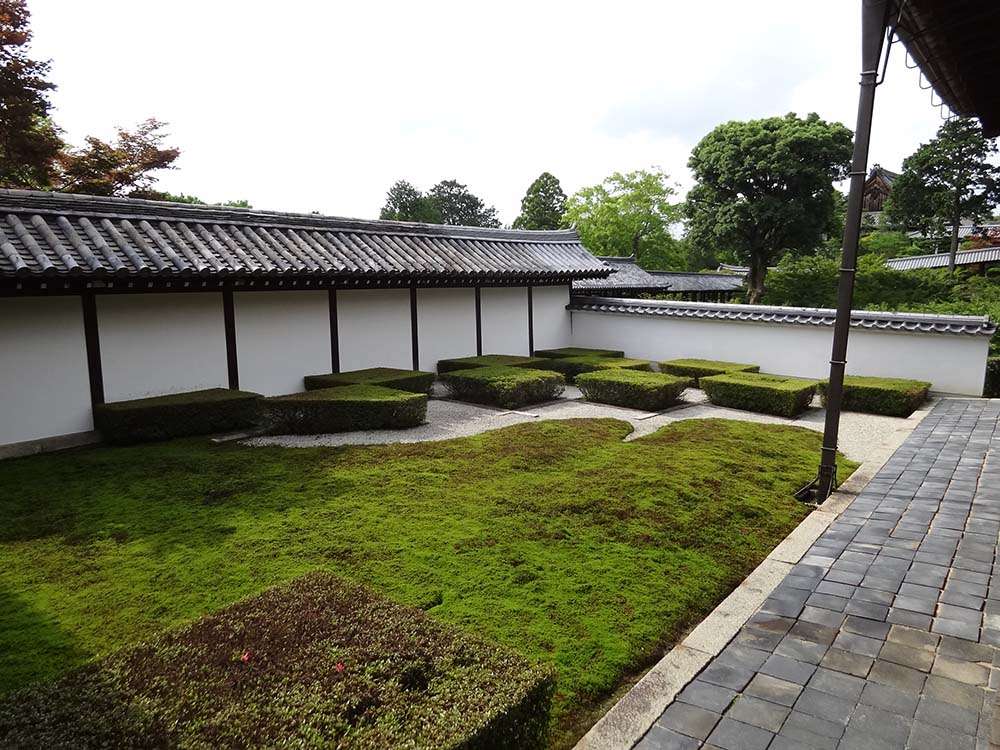Tofukuji Karesansui designed by Mirei Shigemori
About Mirei Shigemori
Mirei Shigemori (重森三玲) was born in 1896 in Okayama, Japan. After studying and practicing ikebana (the traditional Japanese art of flower arrangement), the tea ceremony and art, he moved to Kyoto when he was 33 years old and started independent research on Japanese traditional landscaping and gardens. He visited 500 gardens throughout Japan to conduct a thorough analysis, including taking precise measurements of each garden.
While his research work paved the way for studies of traditional Japanese gardens, his work as a garden designer was utterly unique and incomparable. Many of the gardens he designed are considered masterpieces, preserved and open to the public today.
His garden design is usually described as modern “kare-sansui,” the traditional Japanese Zen rock garden. He often blends modern elements with traditional kare-sansui, such as bold compositions or linear patterns such as checkers.
About Tofukuji
Shigemori designed gardens for 東福寺 (Tofukuji) in 1938. Though not as popular as kinkaku-ji (Golden Pavilion) or Kiyomizu-dera, Tofuku-ji is a must-see hidden treasure in Kyoto. Tofuku-ji temple was founded as early in the 13th century as a prestigious Zen temple. It inherits an ancient architecture style seen in Horyuji and other Nara heritages which originated in the 7th~8th century.
The “Middle Age-ness” of Tofuku-ji is overwhelming. You simply feel it. Compared to Ginkaku-ji or Katsura Rikyu, considered the culmination of Japanese traditional architecture which were built several centuries later, Tofuku-ji retains a certain crudeness. Mituso Ogawa, one of the few remaining chief Miya-daiku (carpenter with special knowledge/skills to construct/repair ancient architecture such as temples or shrines), often talks about how he feels awed when he repairs ancient architecture. When he works on the original wood, which was cut, treated and employed several centuries ago, then maintained and repaired by the carpenters who followed, he literally feels their determination – still so strong after hundreds of years – to make impossible possible, relying only on crude tools and their skills or knowledge. It is that kind of peoples’ strong will that fills this place. The air feels thicker here.
Shigemori designed gardens for 方丈 (Hojo), a residential area for priests. Hojo was reconstructed in 1890, and the 唐門 (kara-mon, the gate) was built in 1909. Then in 1938, Shigemori added four gardens surrounding the building. They are based on Buddha’s life-journey to eventually reach nirvana, and are named 八相の庭, meaning the gardens are supposed to describe the eight different stages Buddha passed through.
Analysis of Tofukuji karesansui
Tofukuji South garden
This garden is the largest of the four, and uses immense dark rocks, one of Shigemori’s signature elements. The rocks here describe the four islands inhibited by Chinese mythological hermits in a rough ocean. On the other side are mounds which represent the five major Zen temples in Kyoto.
From left: Four islands, Kara-mon (gate), and the five mounds representing five Zen temples in Kyoto
Four islands
Five mounds
Tofukuji East garden
Following Zen philosophy, Shigemori was asked to reuse waste materials generated by the renovation process. So he re-used parts of the old pillars to express the Big Dipper. The ground represents clouds in the sky. Double-lined hedges between kare-sansui and the residential architecture are the Milky Way.
Tofukuji North garden
The north garden is probably one of the flagship designs by Shigemori. Since crisp checkers were not part of Japanese traditional pattern, they provide a fresh perspective when blended with traditional design. (Katsura Rikyu, or Katsura Imperial Villa’s Shokin-tei is famous for its bold blue/white checker pattern on the walls)
I wonder if Shigemori already knew when he designed Tofuku-ji, but the mosses growing around squares provide a powerful sense of what “living things” are about, even though they are small. The contrast of inorganic, silent stones and the eagerness of the growth created by the mosses is thrilling.
Tofukuji West garden
This is another checker pattern Shigemori introduced to the Kare-sansui garden, this time using shrubs. In general, a Japanese traditional garden attempts to minimize human intervention on the bushes and greenery, so it’s unusual to see the trees so meticulously trimmed . They are in a great harmony with the surrounding architecture which is defined by fine vertical and horizontal lines to give fresh and clean impression.
If silence had a sound, that is what should fill this place. And it’s played in ff here. It is so powerful that it’s deafening. It will make you cry. This is the power of absence.

